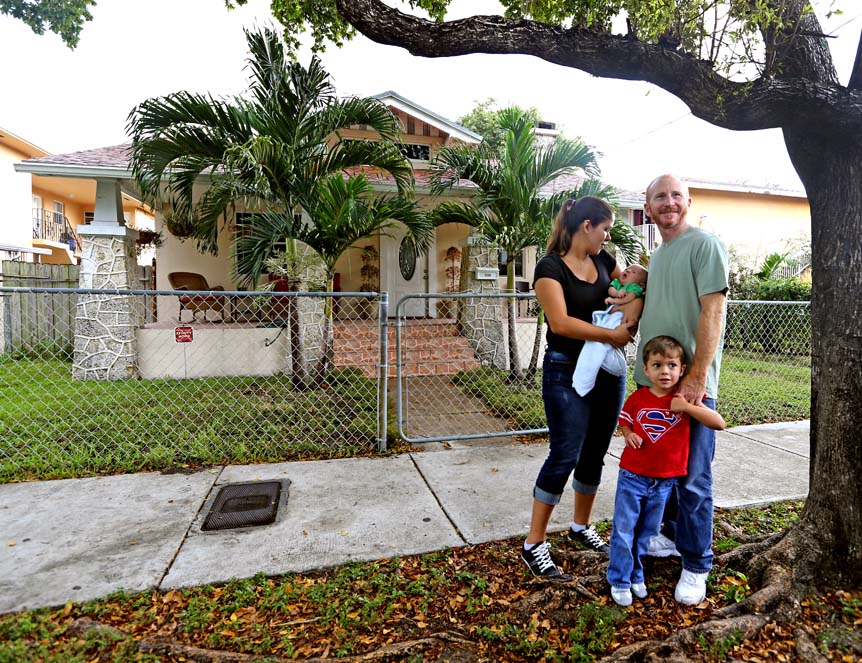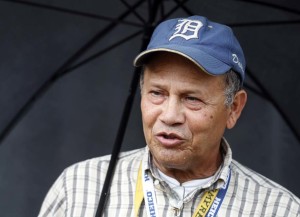There’s a swanky swath of Miami called Brickell that’s bursting at its seams.
Luxury condos — belonging largely to high earners and overseas investors — are packed in so tight that some balconies have front-row seats on the highway.
Something has to give, and it’s becoming clear that the breach lies in nearby neighborhoods where working-class blacks and Latinos live, and which Zillow visited on the Miami stop of its Housing Roadmap tour.
People in those areas have mixed feelings about what appears to be coming — a sort of hyper-gentrification, in which areas rocket from low-income to high, skipping the usual middle-class phase known simply as gentrification.
Some people own homes and are thrilled at the prospect of rising land values. Others worry about their future and how upscale development could change the character of their neighborhoods.
 Luxury comes to Overtown
Luxury comes to Overtown
Bishop James Adams is braced for the worst.
He’s a community leader and senior pastor at St. John’s Baptist Church in the mostly black neighborhood of Overtown, where developers plan a nearly 30-acre retail, residential and hospitality extravaganza called Miami Worldcenter.
It’s bringing the restaurants, shops and entertainment that draw people to Miami. Rather than having to slog miles for those amenities, with Miami Worldcenter, people will be able to visit Bloomingdale’s and Macy’s just down the street from their Brickell condos — or they can buy a luxury residence at the Worldcenter.
“I’m not anti-development,” said Adams, who is leading a $23 million project called St. John Plaza across the street from the church that will include housing, a community center and an early childhood development center.
Worldcenter “has the potential to do some good in providing jobs and bringing economic development to the neighborhood,” he said. But political deals struck over the development could be more beneficial to the community.
For example, Adams said, the project’s 1,800-room hotel could agree to pay more than Florida’s $8.05-an-hour minimum wage.

Bishop James Adams
“To quote an Overtown resident, ‘that’s a dying wage,'” Adams said. “Most of the employees are going to be women, many of them single mothers and many of them minorities. Those individuals won’t be able to live nearby if they aren’t able to make a living wage.”
Overtown has been a haven for black residents going back decades, to a time when segregation made it one of the only neighborhoods where they were welcome.
Muhammad Ali lived there when he was still Cassius Clay, training to beat Sonny Liston for the heavyweight title.
Black performers who played clubs in Miami Beach in the 1940s, ’50s and into the ’60s would come to Overtown for late-night gigs and to stay over at one of its hotels. The endless stream of entertainers included Billie Holiday, Sammy Davis Jr., Sam Cooke, Nat “King” Cole and Josephine Baker.
In recent decades, the area has been down on its luck, its thriving businesses shuttered and some of its streets and empty lots given over to homeless people.
Adams understands why there are tax incentives to eliminate slums and blight, he said. “But they should not be able to eliminate a community.”
Little Havana listed as endangered

Milagro and Brice Ciener with Aiden, 3, and Clark, 6 weeks, outside the Little Havana home they bought last year.
For homeowners, the view is different.
Brice and Milagro Ciener bought a 1,500-square-foot bungalow in the Little Havana neighborhood last year and have already seen the value increase nearly 50 percent.
“Little Havana is the next up-and-coming area. It’s going to be West Brickell,” Milagro said.
She’s not the only one who thinks so.
Developers are already eyeing Little Havana, one of Miami’s most beloved neighborhoods, which makes the backdrop of Brickell high-rises in the distance appear to be looming.
The National Trust for Historic Preservation, concerned about upzoning and a lack of protections for historic buildings, included the area on its 2015 list of America’s 11 Most Endangered Historic Places.
Unlike Overtown, Little Havana remains economically vibrant, its streets lined with locally owned bars, shops and salons and populated by people of all ages and many nationalities.
Fresh investments abound, including last year’s reopening of the Ball & Chain restaurant and club across Calle Ocho (Eighth Street) from iconic Domino Park. The club closed in the 1950s after Count Basie sued for payment.
Owner Bill Fuller said he loves Little Havana, calls it “the real deal,” and is thrilled to be attracting tourists by day and locals in droves at night, especially on weekends. “We’re stewards of a great old brand,” he said.
Half a mile away, the Cieners hope they and their children will benefit from new development in Little Havana.
“It helps us, because we’re property owners, so our lot is going to be worth more money,” Brice said.

Ebenezer Reyes
He also hopes rising values and rents will push out some of their less savory neighbors, people they suspect are stealing and otherwise causing trouble.
Others will be driven out as well — people like Ebenezer Reyes, who’s lived in Little Havana for 32 years, 15 of them in his current apartment.
“When they come to give my landlord an offer for his building, he won’t care how many years I’ve lived there,” Reyes said. “He’s going to sell, because it’s good for him.”
Reyes knows the buildings on the horizon intimately. He labored for decades as an ironworker and put up the steel framework for many of Brickell’s high-rises.
Vision for a different future
Development does not have to mean lost opportunities and being pushed out, Adams said.
“This very well could be a time when conscientious developers could be a catalyst to say, you know what, this neighborhood is worthwhile,” he said. “It’s heartbreaking to think such a great neighborhood that has a lot of character — all it really needs is a breath of fresh air to reignite it economically and socially.”
His St. John Plaza development will pay workers $13 to $15 an hour in hopes of sparking a different future for Overtown — one that looks more like its past.
“Overtown used to be self-sufficient,” Adams said. “We didn’t have to pull up our bootstraps, because we bought our own boots.”
Photos by Charles Trainor Jr.
Related
- Tour of Detroit Housing: The Good, the Bad and the Hopeful
- Zillow Visits Miami, Where Affordability and Transportation Are Top of Mind
- Zillow’s Housing Roadmap to 2016
from Zillow Blog - Real Estate Market Stats, Celebrity Real Estate, and Zillow News http://www.zillow.com/blog/hyper-gentrification-miami-182713/
via Reveeo
No comments:
Post a Comment